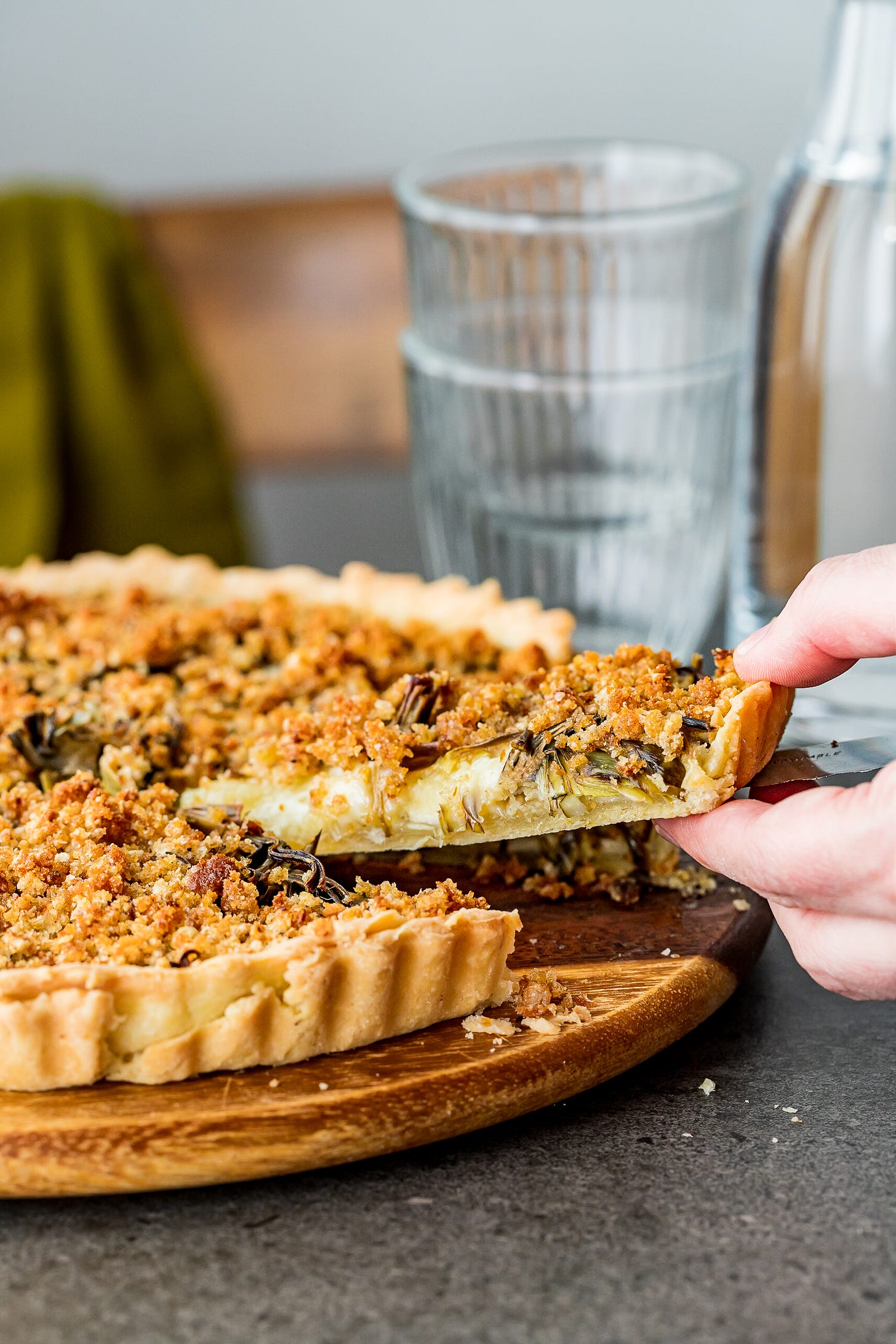Artichoke and pecorino tart
A recipe where the flavours and textures mingle into an early Spring tart: lemony, herbal, deliciously bitter, crisp and cheesy.
This is an exclusive recipe for the subscribers. It is part of a serialized Tuscan cookbook that you will receive over the course of one year, a collection of tested classic Tuscan recipes to add to your cooking repertoire. Learn more about the I Love Toscana project here and find all the recipes here. You can upgrade and get access to this, as well as all our monthly cook-along and live talks, on the link above.
Globe artichokes are almost one of the staple vegetables of Italy. There are several different varieties and they are cooked in a good many different ways. The large green ones, which are so tender that the whole vegetable can be eaten, are at their best in the famous Roman dish carciofi alla Giudea (fried whole in oil), or alla Romana, stewed in oil and garlic. They can be cut into slices and fried, sometimes in batter, and served as part of a fritto misto. Very tiny artichokes are preserved in oil. The medium-sized ones with violet-coloured leaves are perfectly delicious stewed in oil and white wine, and equally good cut in papery slices and either cooked in butter as an accompaniment to veal or served raw with a seasoning of oil and lemon. Hearts of artichokes are often combined with eggs in a frittata, also in a kind of omelette cooked in the oven, and are an important ingredient of the excellent torta pasqualina, Genoese Easter pie. The French and English way of eating artichokes plainly boiled, and dipping them leaf by leaf in butter or oil and lemon, is quite unknown to the Italians.
Elizabeth David in her beautiful, inspiring book Italian Food (1954), tells everything there is to know about Italians and artichokes. She mentions most of my favourite ways of having them: raw, thinly sliced in a carpaccio, preserved in oil, stewed in extra virgin olive oil and white wine, or in a frittata. I also love to make carbonara with artichoke stalks.
Artichokes are a portentous vegetable, a flower in bud actually, which leads us from winter to spring.
If you can firmly associate the sweet, orange flesh of butternut squash with the Autumn rustling leaves and a smoky eggplant to a fierce summer day, artichokes are equally divided between two neighbouring seasons.
They pop up in our weekly menus just before Christmas, shyly stealing space from butternut squash and broccoli. I use them in flans and side dishes or bake them with potatoes and pecorino cheese in a gratin. In winter, artichokes make their appearance in recipes that are hearty, soul-warming, and comforting.
Then slowly the artichokes reveal their spring potential, the herbaceous notes enhanced by mint or lemon. So, I use them in the best soup of the new season, the garmugia, in a carpaccio of thinly sliced raw artichokes with pecorino cheese and plenty of lemon juice, or in savoury tarts, which call loudly for the first warm sunny days, picnics in the garden, and seasonal lunch boxes.
RECIPE - Artichoke and pecorino tart
I remember exactly the day I developed this recipe, twelve years ago. I was inspired by an early Spring and by my cravings for lighter, fresh flavours. My younger sister Claudia was studying in Stuttgart for her Erasmus at the University, it was the first time I would spend so many months far from her. Her brave move gave me inspiration and courage, and this produced a very creative moment in my life.
That night, I texted her I had made a delicious artichoke and pecorino tart she would love - with a hint of lemon that even nonna liked, can you imagine? - and I promised her to make it again when she would come back home for the Easter holidays.






